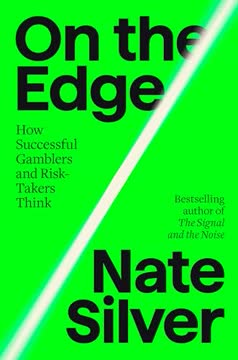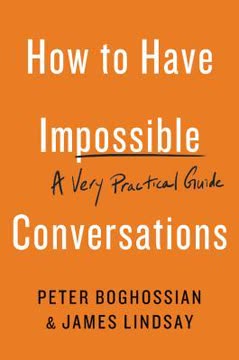मुख्य निष्कर्ष
1. विश्वास के खेल हमारी मूलभूत आवश्यकता का शोषण करते हैं
"धर्म," वोल्टेयर ने कहा था, "तब शुरू हुआ जब पहला ठग पहली मूर्ख से मिला।"
विश्वास सबसे आवश्यक है। मनुष्य के अंदर कुछ ऐसा मानने की स्वाभाविक इच्छा होती है जो जीवन को अर्थ प्रदान करे और हमारी सोच को पुष्ट करे। यही इच्छा हमें उन लोगों के प्रति संवेदनशील बनाती है जो हमारी गहरी आशाओं और भय का पता लगाकर उनका शोषण करते हैं। ठग इस बात में माहिर होते हैं कि वे हमारी इच्छाओं को समझें और खुद को उस रास्ते के रूप में प्रस्तुत करें जो उन्हें पूरा कर सके।
धोखाधड़ी बुद्धिमत्ता से परे होती है। शिक्षा, बुद्धिमत्ता या संशय के बावजूद कोई भी व्यक्ति विश्वासघात का शिकार हो सकता है। ठग की प्रतिभा इस बात को समझने में होती है कि हम क्या चाहते हैं और खुद को उस लक्ष्य तक पहुँचाने का माध्यम कैसे बनाएं। सफल धोखाधड़ी के उदाहरण हैं:
- धार्मिक संप्रदाय जो मोक्ष का वादा करते हैं
- निवेश योजनाएं जो अवास्तविक लाभ देती हैं
- राजनीतिक आंदोलन जो भय और पूर्वाग्रहों का फायदा उठाते हैं
- नकली चिकित्सक जो बीमारों का शोषण करते हैं
2. "पुट-अप" में शिकार का सावधानीपूर्वक चयन और मनोवैज्ञानिक प्रोफाइलिंग शामिल होती है
"मैं मीलों दूर से किसी की कमजोरी पहचान सकता हूँ। किसी भी कमरे में मैं सबसे उपयुक्त शिकार चुन सकता हूँ।"
शिकार का चयन अत्यंत महत्वपूर्ण है। किसी भी धोखाधड़ी की पहली कड़ी, जिसे "पुट-अप" कहा जाता है, में सही निशाने का चयन होता है। ठग लोगों को पढ़ने और उनकी कमजोरियों को पहचानने में निपुण होते हैं। वे देखते हैं:
- भावनात्मक स्थिति (अकेलापन, निराशा, लालच)
- जीवन की परिस्थितियाँ (हाल की हानि, बड़े बदलाव)
- व्यक्तित्व के गुण (अहंकार, आत्मविश्वास से अधिकता)
मनोवैज्ञानिक प्रोफाइलिंग की तकनीकें। ठग संभावित शिकार के बारे में जानकारी इकट्ठा करने के लिए कई तरीके अपनाते हैं:
- शरीर की भाषा और सूक्ष्म भावों का निरीक्षण
- कमजोरियों का पता लगाने के लिए सामान्य बातचीत
- ऑनलाइन और सोशल नेटवर्क के माध्यम से शोध
- ठंडे पढ़ने की तकनीकें जिससे वे मानसिक या सहज ज्ञान युक्त लगें
3. भावनात्मक मनिपुलेशन धोखाधड़ी के "प्ले" चरण की कुंजी है
"जब हमारी भावनाएँ जागृत होती हैं, तो हम उन पर किसी भी चीज़ से अधिक भरोसा करते हैं।"
भावनाएँ तर्क को पीछे छोड़ देती हैं। धोखाधड़ी के "प्ले" चरण में शिकार को भावनात्मक रूप से जोड़ा जाता है। एक बार भावनाएँ सक्रिय हो जाएं, तो तार्किक सोच कमज़ोर पड़ जाती है। ठग इसका फायदा उठाते हैं:
- तात्कालिकता या उत्साह का माहौल बनाकर
- शिकार की गहरी इच्छाओं या भय को भड़काकर
- कहानी कहने के माध्यम से आलोचनात्मक सोच को दरकिनार कर
भावनात्मक अपील के प्रकार। विभिन्न धोखाधड़ी अलग-अलग भावनाओं को निशाना बनाती हैं:
- लालच (तेजी से अमीर बनने की योजनाएं)
- भय (स्वास्थ्य संबंधी डर, आसन्न आपदाएं)
- प्रेम और अपनापन (रोमांस घोटाले)
- गर्व और अहंकार (विशेष निवेश, विशेष ज्ञान)
4. "रोप" में मनाने की तकनीकें शिकार को फंसाने के लिए इस्तेमाल होती हैं
"धैर्यपूर्वक सुनना चाहिए (तेज़ बोलना नहीं, यही धोखेबाज को सफलता दिलाता है)।"
मनाने के सिद्धांत। "रोप" चरण में विभिन्न मनोवैज्ञानिक तकनीकों का उपयोग करके शिकार की प्रतिबद्धता बढ़ाई जाती है। मुख्य सिद्धांत हैं:
- पारस्परिकता (छोटे उपकार करके कर्तव्य का भाव उत्पन्न करना)
- सामाजिक प्रमाण (दिखाना कि अन्य लोग भी शामिल हैं)
- अधिकार (विशेषज्ञ या अधिकारी के रूप में प्रस्तुत होना)
- कमी (सीमित अवसर का भ्रम पैदा करना)
विश्वास धीरे-धीरे बनाना। ठग अक्सर छोटे-छोटे अनुरोधों या निवेशों से शुरुआत करते हैं और धीरे-धीरे दांव बढ़ाते हैं। यह "पैर-दर-दरवाज़ा" तकनीक समय के साथ बड़े वादों को अधिक स्वीकार्य बनाती है।
- उदाहरण: मुफ्त नमूना देना, फिर छोटी खरीदारी, उसके बाद बड़ा निवेश प्रस्तावित करना
5. "कहानी" हमारी अपनी विशिष्टता की धारणा का लाभ उठाती है
"हम मानते हैं कि हम अद्वितीय हैं, चाहे परिस्थितियाँ कैसी भी हों।"
मिथ्या श्रेष्ठता। अधिकांश लोग मानते हैं कि वे सामान्य से बेहतर हैं। ठग इसका फायदा उठाते हैं:
- शिकार की बुद्धिमत्ता या अंतर्दृष्टि की प्रशंसा करके
- "विशेष" अवसर प्रदान करके
- शिकार की विशेष या चुने जाने की भावना को भड़काकर
कहानी को अनुकूलित करना। ठग ऐसी कहानी बनाते हैं जो शिकार की आत्म-छवि और इच्छाओं से मेल खाती हो। इसमें शामिल हो सकता है:
- लाभकारी निवेश का अंदरूनी ज्ञान
- दुनिया बदलने वाले उद्यम का हिस्सा बनने का मौका
- सिस्टम को मात देने का अवसर
6. "कन्विंसर" छोटे-छोटे सफलताओं के माध्यम से विश्वास बनाता है
"एक धोखेबाज खुशी-खुशी सहयोग करता है—और अच्छी तरह से बुनी गई कहानी उसकी सबसे बड़ी ताकत होती है।"
विश्वसनीयता दिखाना। "कन्विंसर" चरण में धोखाधड़ी को वैध साबित करने के लिए सबूत प्रस्तुत किए जाते हैं। इसमें शामिल हैं:
- छोटे प्रारंभिक भुगतान या सफलताएं
- अन्य (नकली) संतुष्ट ग्राहकों के प्रशंसापत्र
- प्रभावशाली दिखने वाले दस्तावेज़ या प्रमाणपत्र
झूठी सुरक्षा का निर्माण। शिकार को कुछ प्रारंभिक सफलता का अनुभव कराकर, धोखेबाज:
- योजना में विश्वास बढ़ाता है
- बड़े निवेश के लिए प्रोत्साहित करता है
- शिकार को भविष्य के अनुरोधों पर सवाल उठाने से रोकता है
7. डूबे हुए खर्च और संज्ञानात्मक पूर्वाग्रह "ब्रेकडाउन" और "सेंड" को बढ़ावा देते हैं
"जितना अधिक और जितना लंबा हमने किसी चीज़ में निवेश किया है, डूबे हुए खर्च का तर्क उतना ही अधिक हमारे तर्क और धारणा पर हावी होता है।"
मनोवैज्ञानिक जाल। जैसे-जैसे धोखाधड़ी आगे बढ़ती है, विभिन्न संज्ञानात्मक पूर्वाग्रह शिकार के लिए पीछे हटना कठिन बना देते हैं:
- डूबे हुए खर्च का भ्रम (पहले के निवेश छोड़ने में हिचक)
- पुष्टि पूर्वाग्रह (ऐसी जानकारी ढूंढ़ना जो पहले से मौजूद विश्वासों को सही ठहराए)
- प्रतिबद्धता की वृद्धि (हानि की भरपाई के लिए दांव बढ़ाना)
चेतावनी संकेतों का तर्कसंगत बहाना। शिकार अक्सर चेतावनी संकेतों को नजरअंदाज या समझाने लगते हैं क्योंकि:
- उन्हें स्वीकार करने का डर कि वे धोखा खा गए हैं
- उम्मीद कि स्थिति सुधरेगी
- वास्तविकता और विश्वास के बीच मानसिक असंगति
8. "टच" वह क्षण है जब शिकार पूरी तरह से लूटा जाता है
"मानव समझ जब एक बार किसी राय को अपना लेती है, तो वह सभी अन्य चीजों को उसे समर्थन देने और सहमत होने के लिए खींचती है।"
धोखाधड़ी का चरम। "टच" वह समय होता है जब धोखेबाज शिकार से पूरी संपत्ति ले लेता है। इसमें शामिल हो सकता है:
- अंतिम, बड़ा निवेश
- शिकार को ऋण लेने या संपत्ति बेचने के लिए मनाना
- जमा किए गए सभी धन के साथ गायब हो जाना
मनोवैज्ञानिक परिणाम। लूटे जाने के बाद भी शिकार अक्सर:
- स्वीकार करने में संघर्ष करते हैं कि वे धोखा खा गए हैं
- धोखेबाज का बचाव करते हैं
- अपराधी की बजाय खुद को दोष देते हैं
9. प्रतिष्ठा की चिंता अक्सर शिकार को धोखाधड़ी की रिपोर्ट करने से रोकती है
"हमारी प्रतिष्ठा हमारे पास सबसे महत्वपूर्ण चीज़ है।"
शर्म का डर। कई धोखाधड़ी के शिकार अपने अनुभवों की रिपोर्ट नहीं करते क्योंकि:
- धोखा खाने की शर्मिंदगी
- दूसरों के निर्णय का डर
- अपनी आत्म-छवि बनाए रखने की इच्छा
सामाजिक परिणाम। धोखाधड़ी की रिपोर्ट करने से नकारात्मक सामाजिक प्रभाव हो सकते हैं:
- दोस्तों और परिवार से विश्वास खोना
- पेशेवर प्रतिष्ठा को नुकसान
- कानूनी या वित्तीय परिणामों की संभावना
चक्र को बनाए रखना। धोखाधड़ी की रिपोर्ट न करके, शिकार अनजाने में:
- धोखेबाजों को काम जारी रखने देते हैं
- दूसरों को उनके अनुभव से सीखने से रोकते हैं
- यह धारणा मजबूत करते हैं कि धोखा खाना शर्मनाक है
अंतिम अपडेट:
FAQ
What's The Confidence Game about?
- Exploration of con artistry: The book delves into the psychology behind confidence games, examining why people fall for scams and the methods used by con artists to manipulate their victims.
- Historical and modern examples: Maria Konnikova provides numerous real-life stories of famous con artists, illustrating the timeless nature of deception.
- Psychological principles: The author discusses key psychological concepts, such as cognitive dissonance and the illusion of control, which contribute to our susceptibility to being conned.
Why should I read The Confidence Game?
- Understanding human psychology: The book offers insights into the human need for belief and how this can lead to gullibility, making it relevant for anyone interested in psychology or human behavior.
- Practical applications: Readers can learn to recognize the signs of manipulation in their own lives, helping them to avoid becoming victims of scams or deceitful practices.
- Engaging storytelling: Konnikova's narrative style combines research with compelling anecdotes, making complex psychological concepts accessible and entertaining.
What are the key takeaways of The Confidence Game?
- Everyone is susceptible: The book emphasizes that anyone can fall victim to a con, regardless of intelligence or background, due to inherent psychological vulnerabilities.
- Emotions drive decisions: Konnikova highlights the role of emotions in decision-making, explaining how feelings can override rational thought, especially in high-pressure situations.
- Cognitive biases: The author discusses various cognitive biases, such as the sunk-cost fallacy and confirmation bias, that influence our behavior.
What are the best quotes from The Confidence Game and what do they mean?
- “The confidence game is an exercise in soft skills.”: This quote underscores that con artists rely on trust and persuasion rather than force, highlighting the psychological manipulation involved in scams.
- “We believe because we want to.”: This reflects the idea that our desire for connection and understanding can lead us to accept false narratives, making us vulnerable to deception.
- “Con men and tricksters run the world. Rascals rule.”: This encapsulates the pervasive nature of deception in society, suggesting that manipulation often leads to success.
What is the "put-up" in The Confidence Game?
- Initial engagement: The "put-up" refers to the first stage of a con, where the con artist identifies and engages a potential victim, often by establishing rapport and trust.
- Emotional vulnerability: During this stage, con artists look for emotional cues that indicate a mark's vulnerabilities, such as recent losses or desires for connection.
- Building familiarity: The goal is to create a sense of familiarity and comfort, making the victim more likely to comply with future requests.
How does the "play" function in The Confidence Game?
- Capturing attention: The "play" is the second stage, where the con artist captivates the mark's attention through storytelling and emotional engagement.
- Emotional manipulation: This stage relies heavily on evoking emotions, whether sympathy, excitement, or fear, to lower the victim's defenses.
- Creating urgency: Con artists often create a sense of urgency during the play, prompting the mark to act quickly without fully considering the consequences.
What is the "rope" in The Confidence Game?
- Persuasive techniques: The "rope" is the third stage of a con, where the con artist employs various persuasive strategies to secure the mark's compliance.
- Building commitment: This stage involves getting the victim to commit to a smaller request first, which makes them more likely to agree to larger requests later on.
- Exploiting trust: The con artist leverages the trust established during the put-up and play to manipulate the mark into making decisions that benefit the con artist.
How do emotions influence decision-making in The Confidence Game?
- Emotional primacy: Konnikova explains that emotions often precede rational thought, meaning that our feelings can heavily influence our decisions.
- Mood congruity: The book discusses how our emotional state can affect how we process information, making us more likely to accept narratives that align with our current feelings.
- Vulnerability during crises: Emotional distress, such as grief or anxiety, can make individuals more susceptible to cons, as they may be seeking comfort or solutions.
What role does storytelling play in The Confidence Game?
- Engaging narratives: Storytelling is a powerful tool for con artists, as compelling stories can evoke strong emotions and draw victims in.
- Creating empathy: A well-told story can foster empathy, leading the mark to feel a connection with the con artist.
- Distraction from logic: When engrossed in a story, individuals may overlook inconsistencies or red flags, allowing the con artist to manipulate their perceptions.
What is the breakdown in The Confidence Game?
- Moment of doubt: The breakdown occurs when the mark begins to experience doubt about the con artist’s story or the legitimacy of the scheme.
- Cognitive dissonance: During the breakdown, the mark may experience cognitive dissonance, struggling to reconcile their previous beliefs with new evidence.
- Recommitment: Instead of walking away, marks often double down on their commitment, believing that their initial investment will eventually pay off.
How can I protect myself from being conned, based on The Confidence Game?
- Recognize emotional triggers: Be aware of your emotional state and how it may influence your decision-making, especially during times of stress or vulnerability.
- Question narratives: Cultivate a habit of skepticism towards compelling stories, especially those that evoke strong emotions or seem too good to be true.
- Verify information: Always check the credentials and backgrounds of individuals or offers that seem suspicious, and don’t hesitate to seek second opinions.
समीक्षाएं
द कॉन्फिडेंस गेम को मिली-जुली प्रतिक्रियाएँ मिली हैं, जिसमें इसके धोखेबाजों और मानव मनोविज्ञान की रोचक पड़ताल की खूब सराहना हुई है। पाठक इसकी दिलचस्प सच्ची कहानियों और यह समझने के लिए कि लोग धोखाधड़ी का शिकार क्यों बनते हैं, की गहरी अंतर्दृष्टि की प्रशंसा करते हैं। कुछ लोग किताब की संरचना और बार-बार दोहराए जाने वाले विषयों की आलोचना भी करते हैं। कई पाठकों के लिए यह एक आँखें खोल देने वाला अनुभव है, जिससे उन्हें एहसास होता है कि सही परिस्थितियों में कोई भी व्यक्ति धोखा खा सकता है। विश्वास, आस्था और मानव स्वभाव की इस किताब की पड़ताल पाठकों के दिल को छूती है, हालांकि कुछ लोग धोखाधड़ी से बचने के लिए और अधिक व्यावहारिक सुझावों की कामना करते हैं। कुल मिलाकर, इसे धोखे की मनोविज्ञान पर एक आकर्षक और विचारोत्तेजक पुस्तक माना जाता है।
Similar Books













